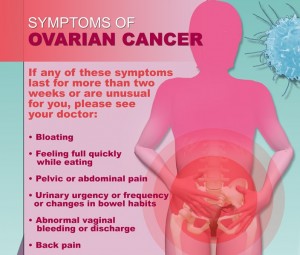Unless you’re just waking up from a coma, you’ve probably heard about Angelina Jolie’s Op Ed in the New York Times announcing her decision to have a preventative double mastectomy. Her decision came on the heels of finding that she possesses a defect in the BRCA1 gene – a defect known to dramatically increase risk of ovarian and breast cancers.
That tiny, minute BRCA1 defect doesn’t mean “oh, you might get cancer someday.” It means “You’re probably going to get cancer, and when you do, it’s going to be bad.” We’re talking a 60% chance of getting breast cancer, and a 40% chance of getting ovarian cancer.
The news that she undertook such drastic measures (I mean, OMG BFF, she cut off her BEWBS! Will she ever work again??) to reduce her risk of cancer was described as “shocking” and “stunning.”
That news was not shocking or stunning to me.
My first thought? “Of course she $#@%ing did.”
The shocking part of that story is not that she went through three extensive, painful surgeries to have her breasts removed – it’s that she allowed her ovaries residency in her body for even another second.
I’d have been less shocked if she’d taken some Tomb Raider tool and removed that shit herself.

Ovarian cancer is nothing to f^ck around with. It is THE LEADING CAUSE OF DEATH from gynecologic cancers in the United States and the fifth leading cause of cancer death among American women.
Jolie implies that she will eventually have an oophorectomy (surgical removal of ovaries) (also – spell check wanted me to change that word to “lumpectomy.” And then my head exploded.), but when she does, will we care? Will we be shocked and stunned that she would do something so drastic? And make no mistake – removing ovaries is not the equivalent of having wisdom teeth pulled. It means lifelong hormone replacement therapy, premature menopause, osteoporosis, and all kinds of fun stuff.
Or is this just front page news because right now we’re talking about her BREASTS?
I hope not. I hope that when Anglelina Jolie and every other woman with a faulty BRCA1 gene has her ovaries removed, we hear about it. I hope we applaud the bravery required to remove an internal body part in the same way we do an externally-visible one. I hope we recognize the insidious and life-threatening nature of ovarian cancer and that as a result, women everywhere become as AWARE of ovarian cancer as they are of breast cancer, and that someday we’ll have an effective screening test for it.
Right now? We don’t. And because of that, only 20 percent of cases are caught before the cancer has spread beyond the ovary to the pelvic region, at which time there’s less than a 50% chance that the woman will survive for even five years.
Angelina Jolie’s mom died of ovarian cancer. So did mine. Our kids ask if what happened to our mothers will happen to us. Fortunately, I can say “probably not.” And thanks to Angelina’s “shocking” and “stunning” choice to have her body’s aesthetics altered, so can she.

